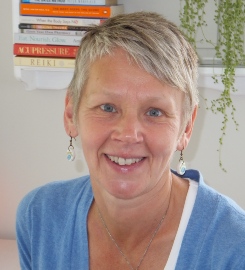Relational psychotherapists hold that one of the primary motivations of the psyche is to be in relationship with others. Attachment-based psychotherapy is a branch of relational psychotherapy. It combines attachment theory with an understanding of how attachment patterns get represented in the human inner world and subsequently re-enacted in adult life. The therapeutic relationship creates a space where relational dynamics from the past emerge. Here they can be understood, healed and transformed, from life-diminishing to life-affirming connections in the present.
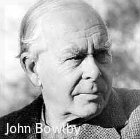
John Bowlby developed attachment theory which has become a cornerstone of modern psychotherapy.
The father of attachment theory was John Bowlby, 1968. He began by recognising that attachment is a biological imperative. An infant needs to develop an attachment relationship with at least one primary caregiver for their physical, and emotional, survival and development. The infant and primary caregiver attach through a range of attachment behaviours, and gaze is one of these.
A secure attachment with a primary caregiver enables the infant to use that relationship as a secure base from which to explore, and then return to. Infants form attachments with caregivers even if they are mis-attuned to, the caregivers do not respond to the baby’s cues, or mistreated. In such cases, known as insecure attachment, they will adapt how they are in order to maintain some form of attachment bond. They may, for example, learn to avert their gaze, be silent, and become invisible as a way of coping.
Drawing from attachment theory and the pioneering work of Daniel Stern, 1985, Bessel van der Kolk, 1987, and Allan Schore, 2003, in infant development, trauma and neuroscience this article explores the connection between attachment, infant development, trauma and neuroscience, and the practice of Relational Presence and Speaking Circles. It invites the reader to explore Relational Presence and Speaking Circles as a crucible, a relational container, for the healing and transformation of the traumatic mis-attunement of insecure attachment relationships.
Gaze, Attunement and Regulation
By the end of the second month of an infant’s development there is a dramatic progression of its social and emotional capacities, and brain development. At this time the structure of an infant’s eyes is reaching full maturity.

Allan Schore developed important theories about how infants learn to regulate their emotions.
Visual experience from the infant’s primary caregiver, usually the mother, becomes the most potent stimulus in the infant’s social environment. The infant’s intense interest in her face, especially in her eyes, leads the infant to track it in space, and to engage in periods of intense mutual gaze. The infant’s gaze, in turn, evokes the mother’s gaze, thereby acting as a potent interpersonal channel for the exchange of “reciprocal mutual influences,” (Schore, 2001). It is through this exchange that a secure attachment bond develops between the mother and infant.
A mother who is attuned to her own arousal, emotional states, will be able to act as a regulator of the infant’s arousal. She will be able to do this by attuning to the infant’s affect, or feeling state. When an infant’s emotional state is attuned to ‘well-enough’, the mother matches her infant most of the time, the infant learns to regulate its own arousal and develop a sense of self-agency in the world.
There will be many moments of mis-attunement, of ruptures in the emotional bond between mothers and infant, when for example, arousal moves between different emotional states, such as distress to joy. In these moments the infant will experience stress. And a mother who is ‘good-enough’, able to attune most of the time, will be able to repair the rupture, bringing the infant back to a state of internal emotional equilibrium, (Winnicott, 1973).
Re-experiencing positive affect following negative experience may teach a child that negativity can be endured and moved through.
Infant resilience emerges from an interactive context in which the child and parent transition from positive to negative and back to positive affect. Resilience in the face of stress is an ultimate indicator of attachment capacity, and therefore adaptive mental health.
Where an infant’s eyes are met with repeated mis-attunments by its mother, and these ruptures are not repaired, the emotional bond itself becomes ruptured. The infant’s gaze might be met with hate, shame, humiliation or despair. Its eyes might not be met at all.
The cumulative impact of such influence means that the infant grows up dis-regulated, not being able to regulate their internal emotional states. They learn that negativity cannot be endured or moved through. Their sense of self can be shaky, or absent. They can find forming life-affirming attachments challenging.
Mis-attunement and Trauma
Experiences that traumatise an individual overwhelm their normal capacity to cope. Trauma can be sudden, one particular event or experience, or cumulative, experiences that happen repeatedly, over time. It is not the event itself that determines whether something is traumatic to someone, but the individual’s experience of the event.
We have long recognised events such as a serious car accident, rape or natural disaster as potentially traumatic. It can be less common to recognise the impact of cumulative emotional mis-attunement, developmental or relational trauma, as traumatic. Yet an individual who experiences relational trauma can be overwhelmed by their experience, and adapt who they are in order to cope.
Mis-attunement can lead to mild and severe dis-regulation which can endure over time, as the infant develops into adolescence and adulthood. It impacts on an individual’s capacity to be resilient, form positive attachments, and on their sense of self. It may be necessary for them to bury the very essence of who they are for their own safety, and learn to be or perform a particular way. An individual who has experienced relational trauma will easily be overwhelmed by life’s experiences, because their capacity to self-manage and seek affirming support has not been developed to its full potential.
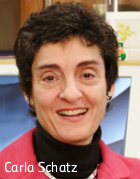
Neuro-scientist Carla Shatz coined the phrase, ‘Neurons that fire together, wire together’
Infants, for whom this has been their experience, grow up believing that such interactions are normal, however ultimately depleting. As neuro-scientist Carla Shatz stated, ‘Neurons that fire together, wire together’, (Hebb, 1949). They become wired to these patterns of relating. Future relational experiences are then co-created from this wiring.
That is until different relational experience gift that individual with the opportunity for emotional and relational transformational change. Change that is also neurological, as new neurons fire and begin to wire together.
And that is the transformative power of Relational Presence and Speaking Circles, founded by Lee Glickstein, Speaking Circles International.
Relational Presence and Speaking Circles – An Opportunity for Relational Repair and Transformation
The process of Relational Presence and a Speaking Circle impact on many different levels. They facilitate healing and transformation.
Relational Presence is our natural capacity to be in connection with one person at a time, from the inside out. It is a powerful foundation for both personal and professional authentic communication and presentation. Relational Presence is a tool for improved relationship and team communication, self-authority, impactful leadership and effective listening. It helps individuals to move away from relating through ‘performance’ to creating real connection with their audience that impacts to affirm and give value.
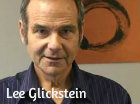
Lee Glickstein is the founder of Speaking Circle International
A Speaking Circle is a safe and supportive space to explore and deepen the experience of Relational Presence. Participants use the space of a Speaking Circle to practise: assuming and receiving, support; connecting with one person at a time; being themselves, and finding their natural voice. The Speaking Circle’s form acts as a crucible, a container, within which transformation can occur. The boundaries of its structure, guidelines and form provide a safe-enough environment from which to explore, heal, and create repair. A Speaking Circle gives participants the opportunity for a different relational experience. The opportunity to be accepted, attuned to and acknowledged for where and who they are. And the opportunity of being championed to be even more of whom they can be.
Just as an infant and caregiver practise meeting each other moment by moment, so participants can explore these moments of meeting in a different, relationally nurturing environment as adults. They have the opportunity to experience rupture and repair through gaze. When they begin to notice they have left, gone away or averted their gaze they can practise coming back, knowing that they will be met, without shame, and in acceptance. They learn to swim in the warm, receptive pool of reciprocity and mutuality, which is gaze. The wounds of the child that they once were heal through interactive repair. They can now claim more of who they are as adults.
As a deeply experiential process participants feel the repair and transformation ‘in their bones’. The shift is at its core cellular because it is felt in every cell of the body. And that is what makes it transformational. A participant’s orientation shifts in a way that nothing is the same from that point on.
The felt experience of their trauma, often contained within their bodies and pre-verbal, can be released. Trapped emotions of the past transform into feelings in the present. Feelings that can now be expressed, acknowledged, witnessed and honoured. The energy of their vital life force is now accessible to them to create from, in the enhancement of their life and relationships. As participants learn to be with and move through their terror, fear or anxiety they learn that their emotional state can be regulated. The containment that the space and facilitation bring invites a new experience of arousal regulation for a participant.
The stance of positive regard, both of the facilitator and the group, further facilitates the process of repair and co-created regulation of emotional states for the participants. And the group, symbolically, becomes a different relational system to, for example, the family, the school or the work place. For where it has been a participant’s experience to grow up in a whole relational system of repeated mis-attunement, the circle offers an opportunity for systemic relational repair.
A participant, who arrives at a circle with internalised images of how they will be related to, is given the opportunity to reframe these internal objects. They become aware, during the process of the circle, that these representations are not real, and that they are in fact their own projections. This awareness, from the felt experience of the real connection that is present, facilitates the participant to let go of ‘the story’ they have believed for so long, claim what is life-affirming, and thrive.
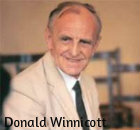 Many children and adolescents who grow up in environments of traumatic mis-attunement feel as though they are an object, a thing, as opposed to a subjective being, or self. They may have had to bury the very essence of who they are deep inside. They may have had to create a false self, a false way of being in the world, so as to be accepted, (Winnicott, 1965). These experiences impact greatly on their sense of esteem and worth. When a participant is acknowledged with Essence or Positive Appreciation, who they are, their subjectivity, the very essence of their humanity is reflected back to them. This is reparative for individuals who have felt traumatised by being objectified.
Many children and adolescents who grow up in environments of traumatic mis-attunement feel as though they are an object, a thing, as opposed to a subjective being, or self. They may have had to bury the very essence of who they are deep inside. They may have had to create a false self, a false way of being in the world, so as to be accepted, (Winnicott, 1965). These experiences impact greatly on their sense of esteem and worth. When a participant is acknowledged with Essence or Positive Appreciation, who they are, their subjectivity, the very essence of their humanity is reflected back to them. This is reparative for individuals who have felt traumatised by being objectified.

Speaking Circles provide a relational experience back to wholeness, of self and in connection to others. As a metaphor they are like The Ouroboros, an ancient symbol of wholeness, a metaphor for the circular process of integration and assimilation, transformation and change.
Further Reading
Bowlby, J. (1958). The nature of the child’s tie to his mother. International Journal of Psychoanalysis, 39, 1-23.
Bowlby, J. (1968). Attachment and Loss, Vol. 1: Attachment. New York: Basic Books.
Bowlby, J. (1973). Attachment and Loss, Vol. 2: Separation, Anxiety, and Anger. London: Penguin Books.
Bowlby, J. (1980). Attachment and Loss, Vol. 3: Loss: Sadness and Depression. New York:Basic Books.
Glickstein, L. Speaking Circles International, www.speakingcircles.com
Hebb, D.O. (1949). The organization of behavior. New York: Wiley & Sons.
van der Kolk, B.A. (1987). Psychological Trauma. Washington DC, American Psychiatric Press.
Schore, A.N. (originally published 1994). Affect Regulation and the Origin of the Self. ISBN 0-8058-3459-1
Schore, A.N. (Article, Department of Psychiatry and Biobehavioural Sciences, 2001). The Effects of Early Relational Trauma on Right Brain Development, Affect Regulation and Infant Mental Health.
Schore, A.N. (2003). Affect Dysregulation and Disorders of the Self. WW Norton & Company.
Schore, A.N. (2003). Affect Regulation and Repair of the Self. WW Norton & Company.
Stern, D. N. (1977). The First Relationship: Infant and Mother. Basic Books.
Stern, D.N. (1985) and (1998). The Interpersonal World of the Infant. Karnac Books.
Stern, D.N. (1990). Diary of a Baby. Basic Books.
Stern, D.N. (1995). Motherhood Constellation: A Unified View of Parent-Infant Psychotherapy. Basic Books.
Winnicott, (D. W. 1965).“Ego distortion in terms of true and false self,” in The Maturational Process and the Facilitating Environment: Studies in the Theory of Emotional Development. New York: International UP Inc.
Winnicott, D. W. (1973). The Child, the Family, and the Outside World. Middlesex
©January 2012 Sally Forman. All Rights Reserved

Sally Forman
Sally is a Certified Hakomi Therapist, Psychotherapist, Professional Certified Coach and Speaking Circles Facilitator, in private practice in Central Otago.


